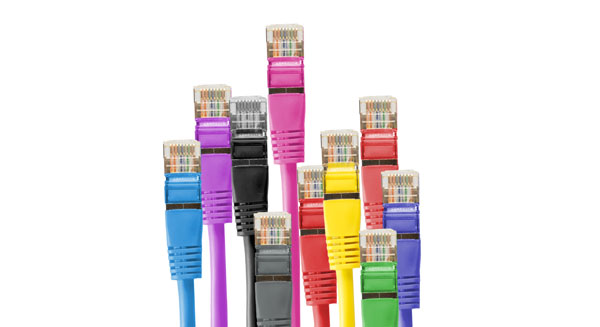Category 8 offers four times the bandwidth of Category 6A cabling, with internal impairments specified up to 2GHz; alien impairments are also specified up to 2GHz.
Structured Cabling Components
If shielding and length limitations are put aside, Category 8 is fundamentally the same cabling system as prior categories; it is simply made to perform at much higher bandwidth.
Cables
Category 8 cables will be shielded, but will not be limited to any specific shielding construction. The cables can use an F/UTP construction, in which the shield surrounds the twisted-pairs but not the individual twisted-pairs, or they can use an S/FTP construction, in which the individual twisted-pairs are also shielded. Other shielding cable constructions will be valid as well.
Connectors
Category 8 connectors will use the familiar and ubiquitous RJ45 interface. Category 8 jacks will require proper grounding to the cable and to the device they are installed into (patch panel or outlet). They will be designed for field termination, but will also be available pre-terminated as part of Panduit’s QuickNet line.
Ideal Environments for Category 8
Category 8 will be most useful in data centre applications or small enterprise LANs in commercial buildings. Because of the reach, connector limitations and its shielded-only requirements, Category 8 standard is targeted for data centre switch-to-server interconnections, primarily in top-of-rack or end-of-row topologies.
Reach
Enterprise LANs have been designed to accommodate up to 100 meters, 1000BASE-T or 10GBASE-T, thus making a transition to 25GBASE-T or 40GBASE-T seem impractical for large commercial buildings. However, there may be some atypical short-reach data networks in commercial buildings that could use the 30-meter reach of 25/40GBASE-T in the future.
Number of Connectors
While Category 8 is limited to two connectors in the copper channel (excluding connections on end equipment), this is typically adequate in a data centre environment and many common enterprise links.
Shielded
Though shielded cabling systems must be grounded, this is also not an issue in most data centres, since the connections are closer together. Shielding problems like ground loops can typically be avoided when both ends of the channel are in the same room and nearby. Shielding problems can also be avoided by using proper grounding techniques and products like the Panduit® StructuredGroundTM System.
